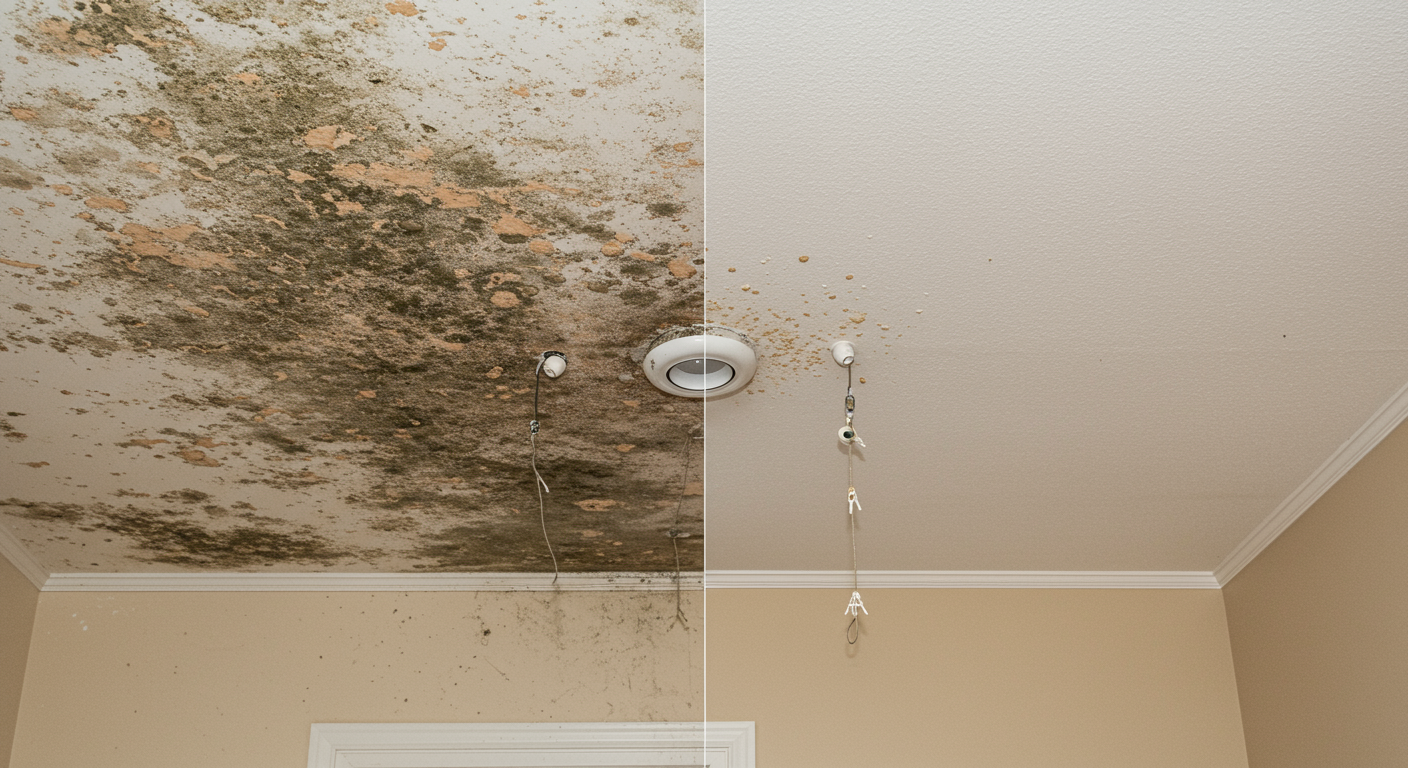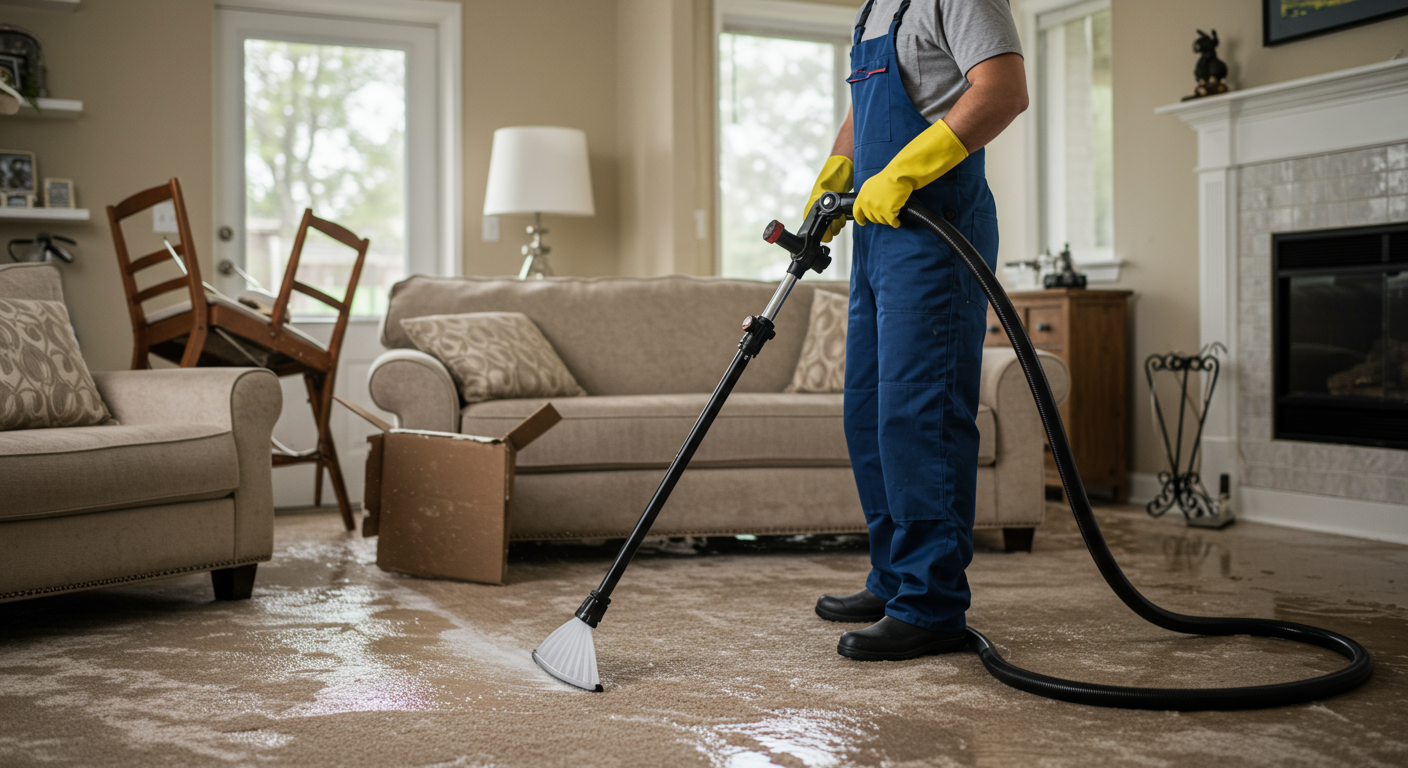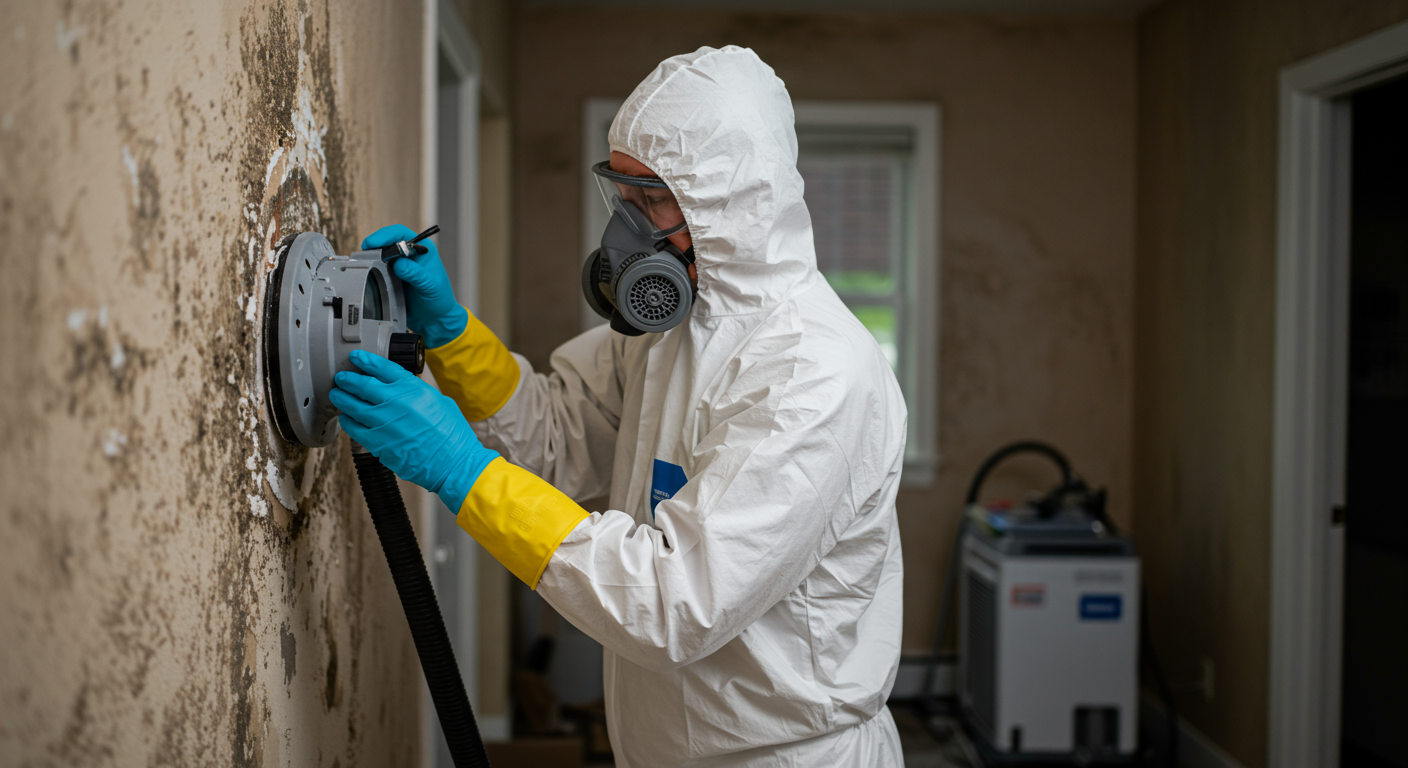Mold on ceilings is a common issue that can lead to health risks and structural damage if left untreated. Whether it’s a small patch or a widespread infestation, addressing mold promptly is essential. This guide will explore the causes of mold growth, DIY solutions, when to call professionals, and preventive measures to keep your ceilings mold-free.
Understanding Mold Growth on Ceilings
Causes of Mold: Moisture, Humidity, and Poor Ventilation
Mold thrives in environments with high moisture and poor ventilation. Leaky roofs, plumbing issues, and condensation are common culprits. Bathrooms, kitchens, and basements are particularly vulnerable due to their exposure to humidity. Without proper airflow, moisture accumulates, creating the perfect breeding ground for mold spores.
Health Risks Associated with Mold Exposure
Exposure to mold can trigger allergies, respiratory issues, and even more severe health problems in individuals with compromised immune systems. Symptoms include sneezing, coughing, skin irritation, and in some cases, asthma attacks. Prolonged exposure can lead to chronic respiratory conditions, emphasizing the importance of addressing mold promptly.
DIY Solutions for Small Mold Infestations
Recommended Cleaning Agents: Vinegar, Baking Soda, and Bleach
For minor mold problems, household cleaning agents can be highly effective. White vinegar is a natural antifungal that kills mold spores. Baking soda, when mixed with water, creates a gentle abrasive cleaner. Bleach is another option, but it should be used cautiously as it can damage certain surfaces and release strong fumes.
Step-by-Step Guide to Safely Remove Mold
- Prepare the Area: Wear protective gear, including gloves, goggles, and a mask, to avoid inhaling spores.
- Mix Your Solution: Combine one part vinegar or bleach with three parts water in a spray bottle.
- Apply to the Mold: Spray the solution generously on the affected area and let it sit for 15 minutes.
- Scrub the Surface: Use a brush or sponge to scrub the mold away.
- Rinse and Dry: Wipe the area with a damp cloth and ensure it dries completely to prevent regrowth.

When to Call Professionals for Mold Remediation
Signs You Need Expert Help
If the mold covers an area larger than 10 square feet, it’s time to call in professionals. Other signs include persistent mold growth despite cleaning, a musty odor that won’t go away, or visible mold in hard-to-reach areas like air ducts. Structural damage caused by mold is another indicator that professional intervention is necessary.
What to Expect from a Professional Mold Remediation Service
Professional services begin with a thorough inspection to identify the source of the mold. They use specialized equipment to remove mold safely and prevent its spread. Additionally, they may recommend repairs or modifications to eliminate the underlying cause, such as fixing leaks or improving ventilation. For more details, explore Expert Mold Mitigation Near Me: Fast, Reliable, and Certified Solutions.
Preventing Mold Growth in the Future
Importance of Proper Ventilation and Humidity Control
Maintaining proper airflow and controlling humidity levels are key to preventing mold. Use exhaust fans in bathrooms and kitchens, and consider investing in a dehumidifier for damp areas. Regularly inspect your home for leaks and repair them promptly to avoid moisture buildup.
Maintenance Tips for Mold-Free Ceilings
- Clean Regularly: Dust and clean ceilings to prevent mold spores from settling.
- Monitor Humidity Levels: Keep indoor humidity below 60% using a hygrometer.
- Seal Cracks and Gaps: Ensure ceilings are sealed to prevent water intrusion.
- Use Mold-Resistant Paint: Apply paint designed to resist mold growth, especially in high-humidity areas.
For more insights on maintaining a mold-free home, visit Essential Guide to Managing Residential Mold: Prevention, Cleanup, and Health Tips.
Addressing mold on ceilings requires a proactive approach, combining effective cleaning methods with preventive measures. By understanding the causes of mold, knowing when to seek professional help, and taking steps to prevent future growth, you can protect your home and health. For expert assistance, check out Comprehensive Mold Abatement Services in New Orleans, LA: Protect Your Home and Health.


